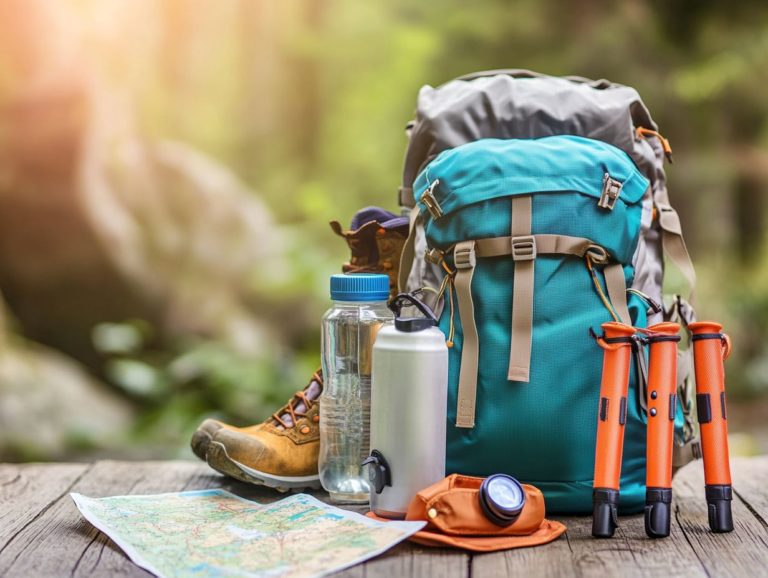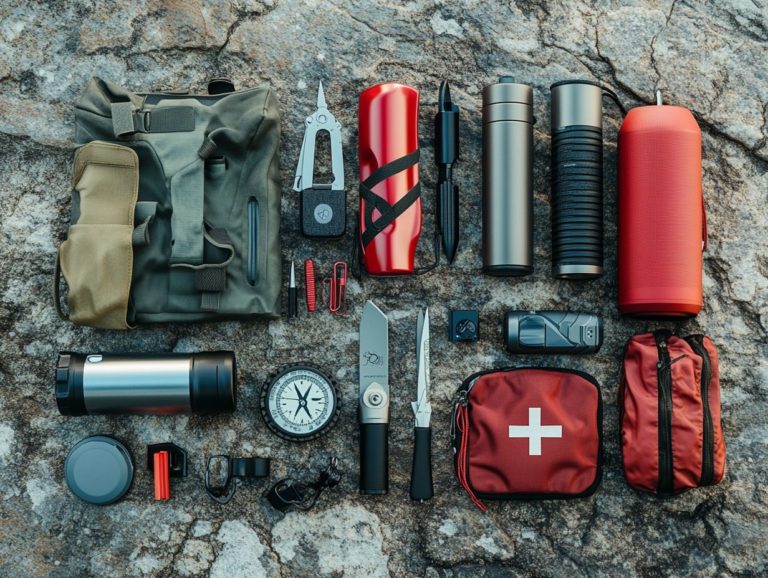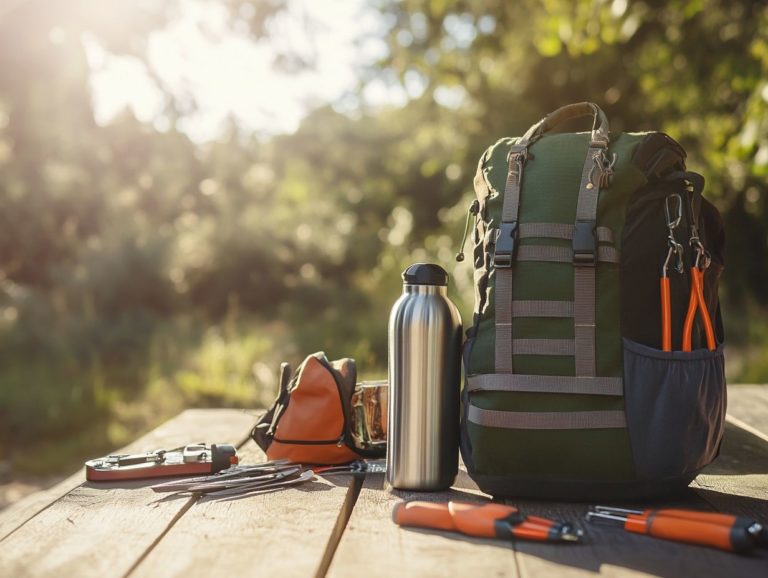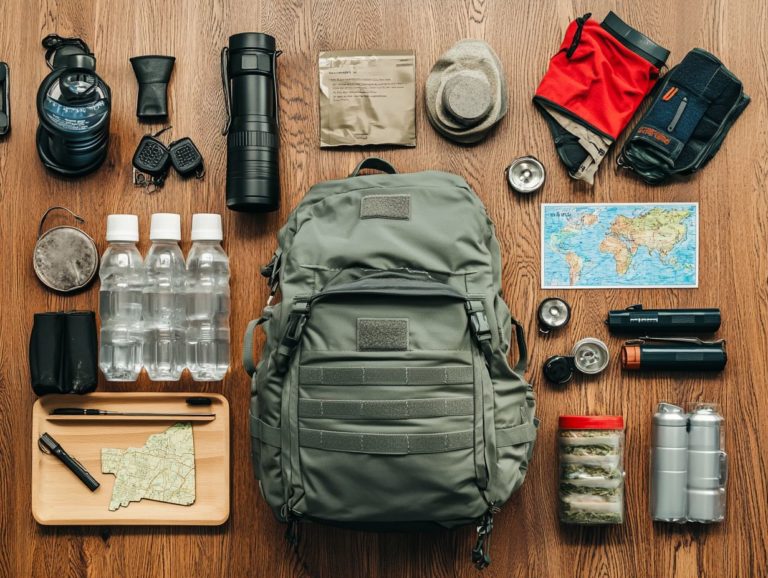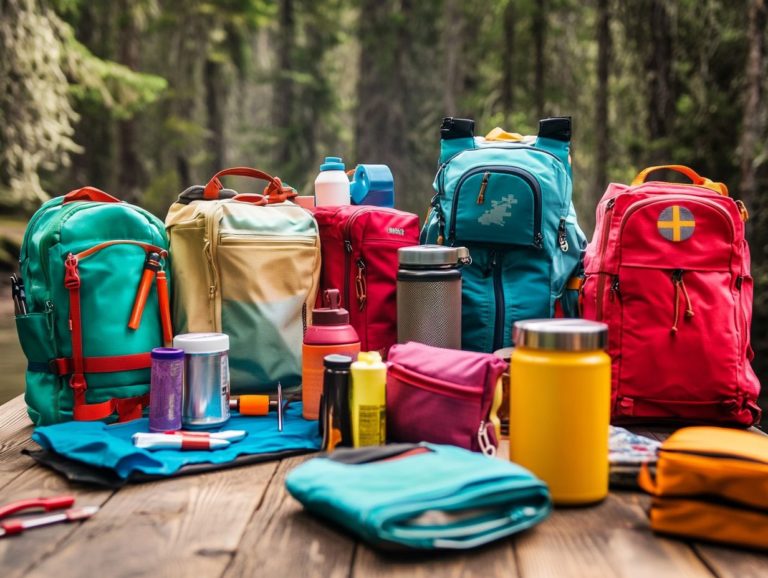Understanding Climbing Gear Ratings
When it comes to climbing, understanding gear ratings is essential for ensuring both your safety and performance. The YDS rating system serves as a valuable tool for climbers to evaluate their skill levels and select the right equipment.
This guide carefully breaks down the YDS scale, dispels common myths surrounding gear ratings, and delivers vital tips for selecting and upgrading your climbing gear as you progress.
Whether you re a newcomer or an experienced climber, this information will empower you to make informed decisions on the rock and help you navigate various climbing routes.
Contents
Key Takeaways:
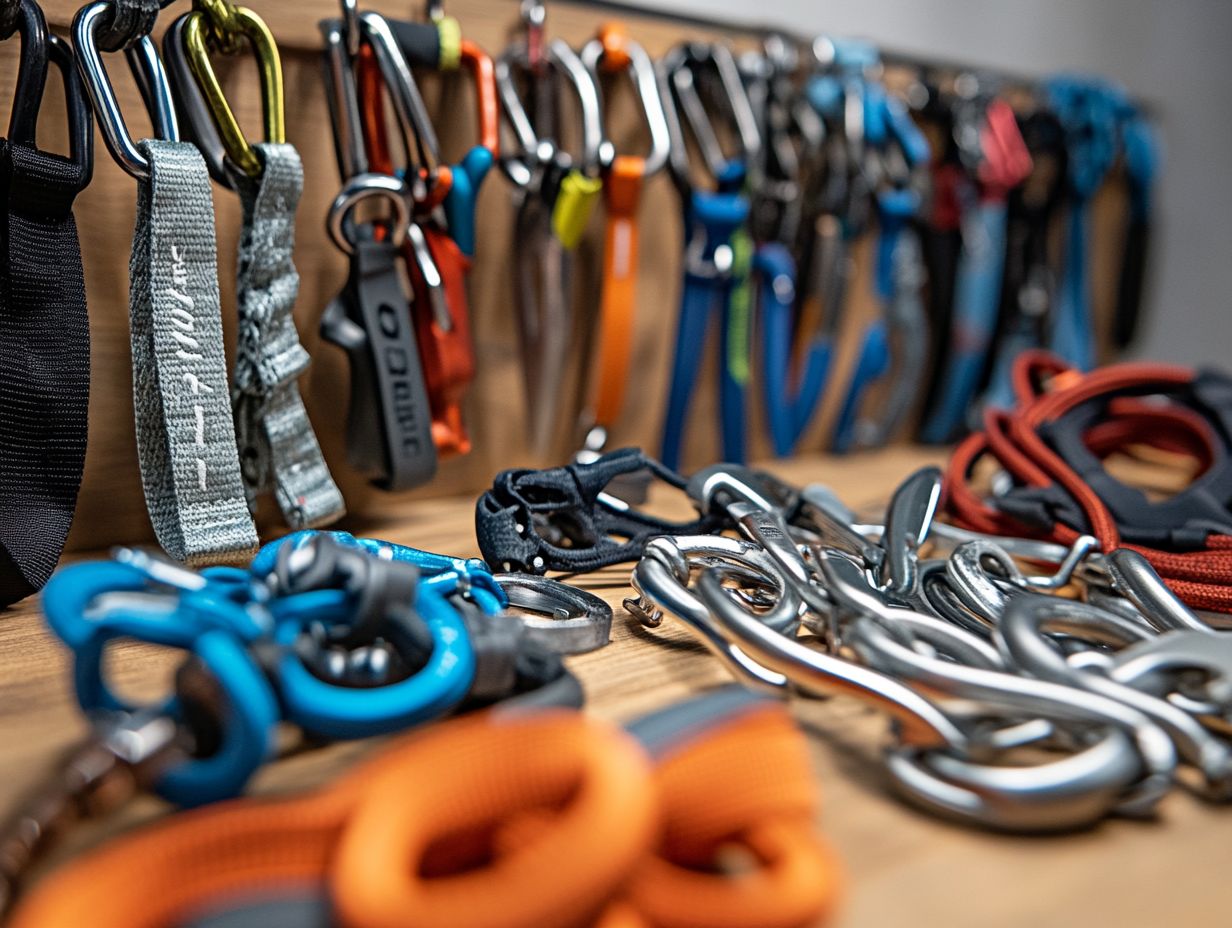
- Ratings are crucial for climbing safety. Understanding strength ratings is key.
- The YDS scale is the most widely used rating system for climbing.
- Consider factors like weight, durability, and type of climb when interpreting gear ratings.
Why Ratings are Important
Understanding the significance of climbing gear ratings is crucial for you, whether you re just starting or a seasoned athlete. These ratings provide a vital framework for assessing the safety ratings, performance, and suitability of your gear for various climbing techniques.
Take, for instance, the Yosemite Decimal System: it helps you grasp route difficulty, categorizing climbs from class 1 (easy hiking) to class 5 (technical climbing).
The French Grading Scale offers detailed grades for sport routes, giving you a clearer picture of the challenges that lie ahead. For bouldering, problems are rated from V0 to V17, enabling you to select boulder problems that align with your skill level.
You may also want to explore the circuit grading system for various challenges. This classification system helps you choose the right gear like harnesses and climbing shoes tailored to specific grades and emphasizes the importance of understanding tensile breaking strength, which is the maximum force that can be applied before the gear fails. For a comprehensive overview, check out understanding the different types of climbing gear.
Being aware of how much force a belayer can handle and knowing the rated limits of your gear is essential for preventing accidents. With this knowledge, you ll enjoy safer climbing adventures, allowing you to focus on the thrill of the ascent.
Understanding the YDS Rating System
The Yosemite Decimal System (YDS) is one of the most esteemed grading systems in climbing, categorizing routes by their difficulty levels. This enables you to assess the challenges that await on various climbs.
The system ranges from class 1, which signifies an easy walk, to class 5, reserved for technical climbing, complete with subclasses that indicate increasing difficulty. Understanding this scale is essential for preparing adequately and selecting the right climbing gear.
Climbing guidebooks frequently employ the YDS to inform you about what to expect on specific routes, enhancing your safety and enjoyment. By integrating YDS ratings into your climbing education, you ensure not only that you choose the appropriate gear but also that you mentally prepare for the challenges ahead.
Explanation of the YDS Scale
The Yosemite Decimal System (YDS) provides a comprehensive framework for understanding climbing grades, neatly categorizing routes into distinct classes that reflect their difficulty and technical requirements.
The system spans from Class 1, which is all about easy hiking, to Class 5, exclusively for technical rock climbing. Within Class 5, grades are further divided to indicate escalating levels of difficulty, ranging from 5.0 to 5.15, each necessitating specialized gear and an understanding of climbing difficulties.
For example, if you’re tackling 5.0 routes, you might rely on basic equipment like climbing shoes. Conversely, those facing 5.12 or higher will typically require advanced gear, including ropes and protection devices. To understand the gear needed for different climbing grades, check out understanding climbing gear ratings explained.
This structured grading system enables you to assess the challenges ahead and choose routes that align with your skills and the necessary gear for each class, ultimately enhancing both your safety and confidence as you navigate through various climbing systems.
Interpreting Gear Ratings for Climbing Safety
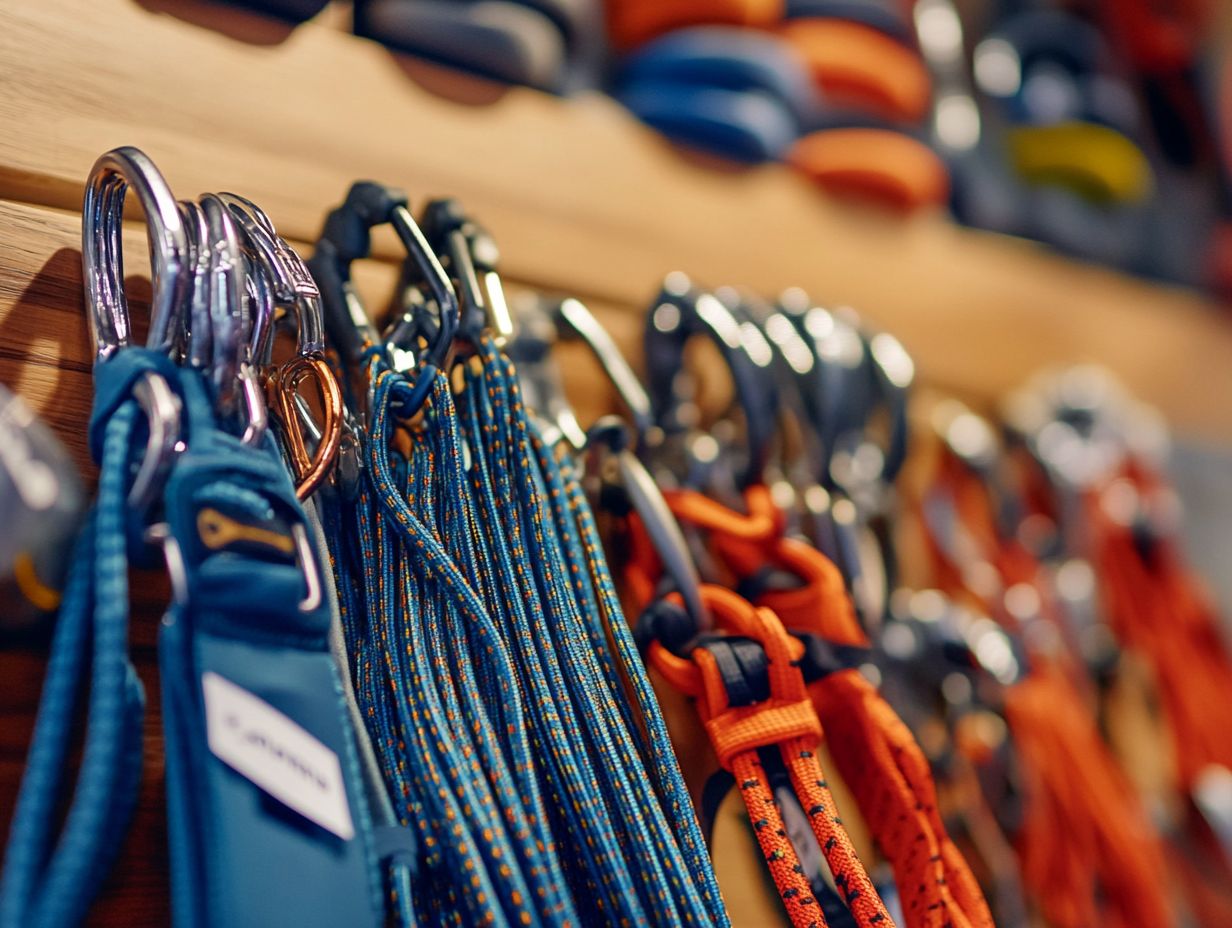
Interpreting gear ratings is essential for your climbing safety. These ratings reflect the strength and reliability of your equipment, including ropes, harnesses, and climbing holds. They reveal the amount of force your gear can endure during a climb.
Each piece of climbing gear has specific strength ratings, often noted in kilonewtons (kN), which indicate the maximum load it can handle before failure. By understanding climbing gear weight limits, you can select the right gear tailored to your climbing style, be it sport climbing, bouldering, or multi-pitch routes.
This knowledge not only enhances your safety but also boosts your confidence in your gear. It allows you to focus on enjoying the ascent and tackling various climbing techniques.
Factors to Consider
When you interpret gear ratings for climbing safety, several critical factors come into play, including strength ratings, the strength of the material when pulled, and the specific climbing routes you intend to conquer.
Understanding these elements is crucial. They influence your performance and the safety of everyone involved. The strength ratings, measured in kilonewtons, reveal how much force your gear can endure before it fails, while the strength of the material when pulled offers valuable insight into the material’s durability under tension.
As the load on the belayer increases, it becomes vital to consider the implications of dynamic forces in the event of a fall. This calls for a meticulous assessment of the gear you select, ensuring it not only matches the climbing conditions but also aligns with the belayer s capacity to manage that load effectively.
Common Misconceptions about Gear Ratings
The climbing industry is filled with misconceptions about gear ratings, often prompting climbers to make choices that could jeopardize their safety and performance on the wall. Many climbers mistakenly believe that all gear is created equal or that higher ratings are always essential.
This oversight can lead you to miss the crucial point that different climbing techniques and conditions call for specific types of equipment. For instance, as a boulderer, you might not need the same strength of the material when pulled in your gear as a sport climber tackling vertical routes. This misunderstanding could push you toward selecting gear that isn t suited for your needs, potentially putting you in risky situations.
That s why it s essential to consult climbing guidebooks, like Mountain Project, and trusted resources. Doing so helps debunk these myths and ensures you re properly equipped for your climbing adventures.
Debunking Myths and Misunderstandings
Debunking the myths surrounding gear ratings is crucial for you, as many climbers hold misconceptions about what their equipment can and cannot do based on various climbing systems.
These misunderstandings can foster overconfidence in gear performance or leave you unaware of the right applications for specific ratings. For instance, it s a common belief that all gear rated for a certain load will behave the same under similar conditions, but that s not the case at all. Factors like wear and tear, environmental exposure, and improper usage can seriously compromise a piece of gear, impacting its overall safety.
By confronting these myths, you’ll unlock the full potential of your gear, ensuring safer and more thrilling climbs. You can enhance your performance, whether on challenging climbing routes or while utilizing knee bars.
How to Choose the Right Gear for Your Skill Level
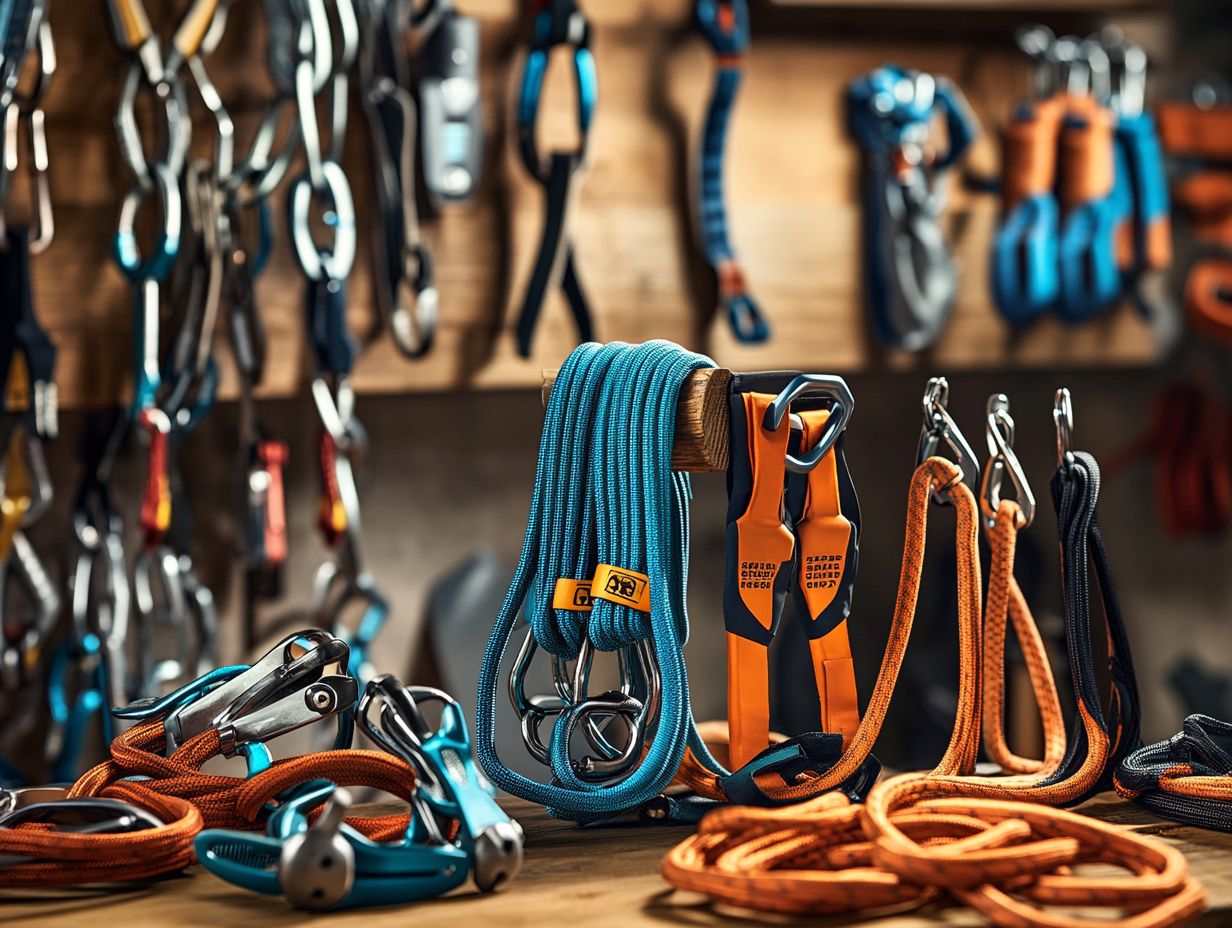
Choosing the right climbing gear for your skill level is crucial for your safety. It also enhances your enjoyment on the wall.
To make well-informed decisions, take a moment to assess your personal climbing experience, the grades of the routes you aspire to conquer, and the recommendations found in climbing guidebooks, including insights from experts like Craig Connally.
As a novice, it s essential not to reach for advanced gear designed for seasoned climbers. You also shouldn’t underestimate the significance of selecting equipment that matches your abilities.
By familiarizing yourself with grading systems, like the Yosemite Decimal System (a scale for rating the difficulty of climbing routes), you can align your gear choices with your skills.
Tips for Selecting Appropriate Gear
When selecting the right climbing gear, you must consider your climbing techniques and the challenges of the routes you intend to tackle. Refer to climbing guidebooks to enhance your preparation.
You should evaluate the environmental conditions that may arise, such as weather patterns, types of terrain, and potential hazards. For example, if you’re gearing up for a multi-pitch climb in a colder climate, investing in insulated layers, quality gloves, and specialized footwear can significantly enhance your comfort and safety.
Online communities and forums are excellent resources for gathering insights from fellow climbers. Visiting local climbing shops can be a game changer; experienced staff can offer personalized recommendations and let you try on equipment firsthand.
Additionally, guidebooks often recommend gear tailored to specific routes, ensuring you re fully prepared for your adventure.
Upgrading Your Gear as You Progress
Upgrading your climbing gear is not just important; it s thrilling as you sharpen your skills and conquer new challenges!
When and How to Upgrade Your Gear
Determining when and how to upgrade your climbing gear requires a thoughtful assessment of your climbing challenges. Evaluate the ratings of your current equipment and the evolving climbing systems you aspire to explore.
Along with these considerations, you must evaluate the performance levels your existing gear provides, especially as your climbs become increasingly demanding.
Safety is paramount; relying on older gear may leave you vulnerable, as it might not meet the latest standards or withstand the rigors of frequent use. It’s essential to recognize that advancements in technology can introduce innovative features that enhance both safety and efficiency, potentially revolutionizing your climbing experience.
To make well-informed choices, you should conduct thorough research on products, meticulously comparing reviews and specifications from trusted sources. Visiting local gear shops allows you to evaluate gear firsthand, ensuring it meets your requirements and feels comfortable during your climbs.
Frequently Asked Questions
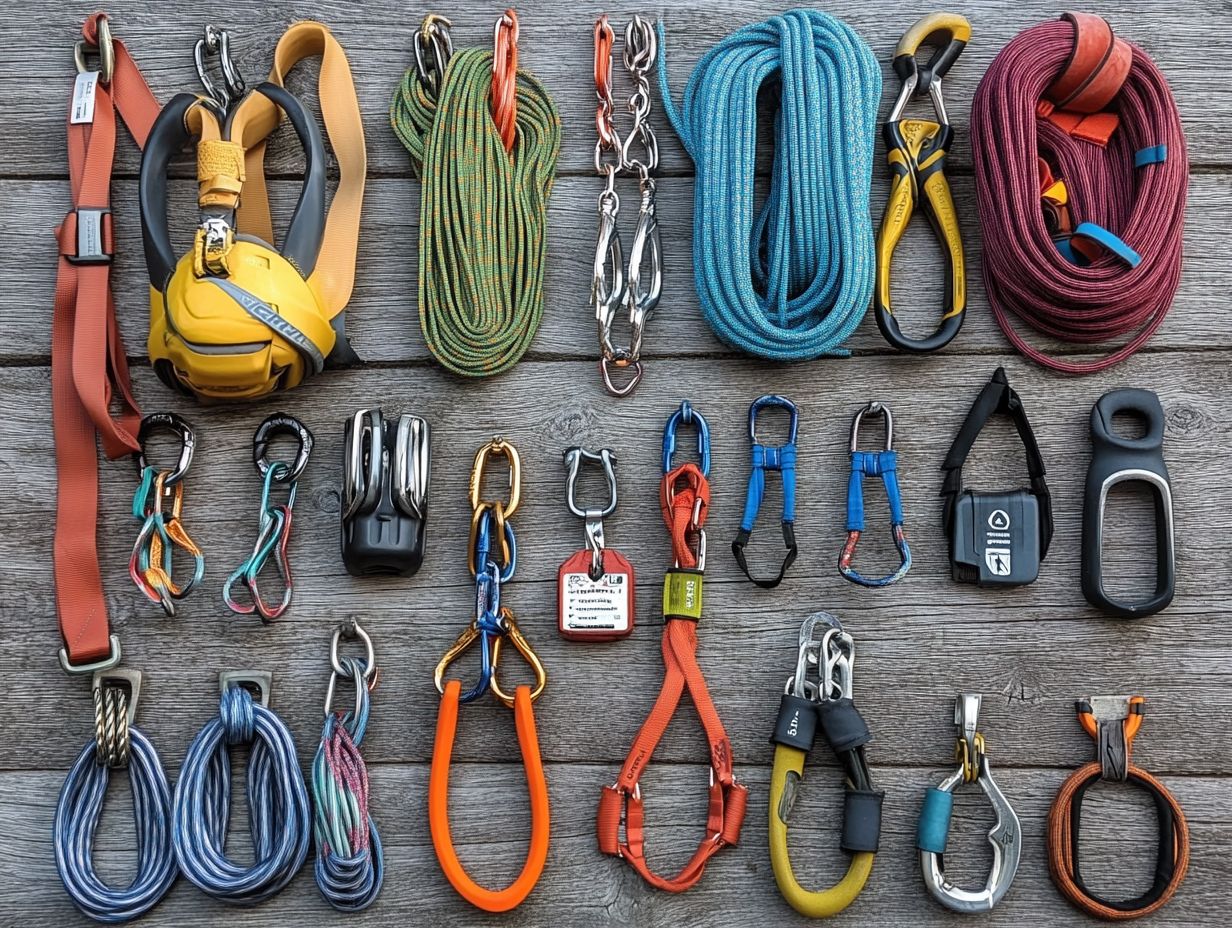
What are climbing gear ratings?
Climbing gear ratings are standardized systems that check the safety and strength of climbing equipment like ropes, carabiners, and harnesses. This includes essential metrics such as strength ratings and the maximum force the gear can withstand before breaking.
Why is it important to understand climbing gear ratings?
Knowing climbing gear ratings can keep you safe and boost your confidence on the rock! This knowledge helps you make informed decisions about your gear, ensuring you’re using equipment that meets industry standards.
What is the UIAA rating system for climbing gear?
The International Mountaineering and Climbing Federation (UIAA) rating system rates the strength and durability of climbing ropes and carabiners. It ranges from UIAA I to UIAA XII, with higher numbers indicating stronger gear, similar to the French Grading Scale used in sport climbing.
How is the EN rating system used for climbing gear?
The European Norm (EN) rating system sets safety requirements for climbing gear, including helmets, harnesses, and protection devices. It uses classifications A, B, or C, with A being the strongest and most durable.
What does the kN rating on climbing gear mean?
kN stands for kilonewton, a unit that measures force. It indicates the strength and load-bearing capacity of climbing gear; the higher the kN rating, the stronger the gear and the more weight it can hold.
Don t take chances with your safety understanding these ratings is essential! Review your gear and ensure you know its ratings for your safety.
Are there any other important climbing gear ratings to know?
Yes! There are several key ratings you should be aware of. The impact force rating tells you how much force a rope can handle if you fall.
The fall rating indicates how many falls a piece of gear can take before it needs to be replaced. This is similar to the circuit grading system used for evaluating boulder problems.

